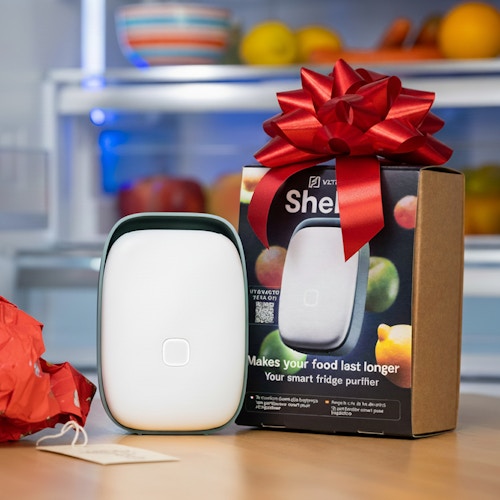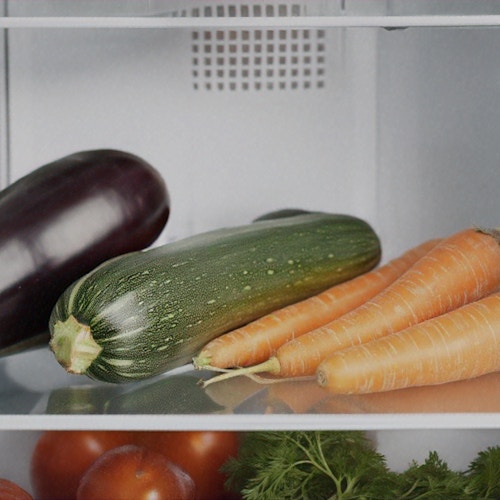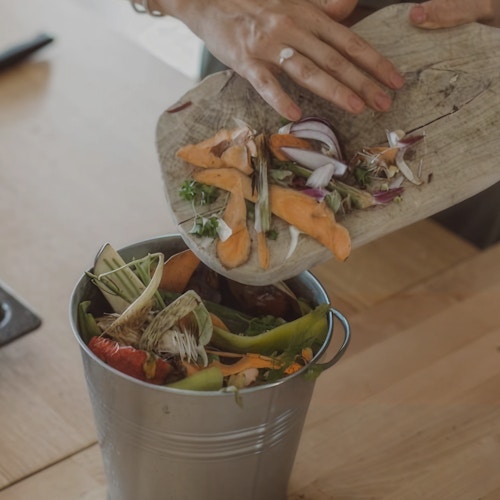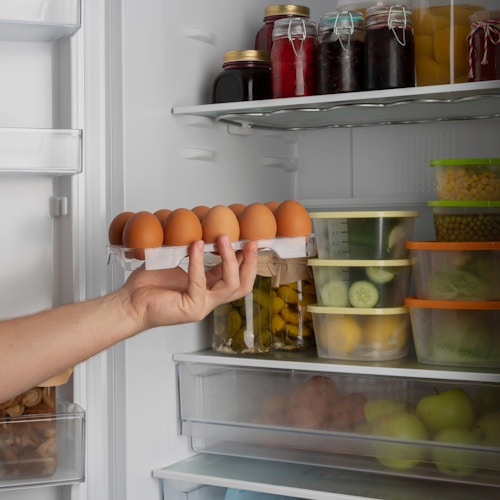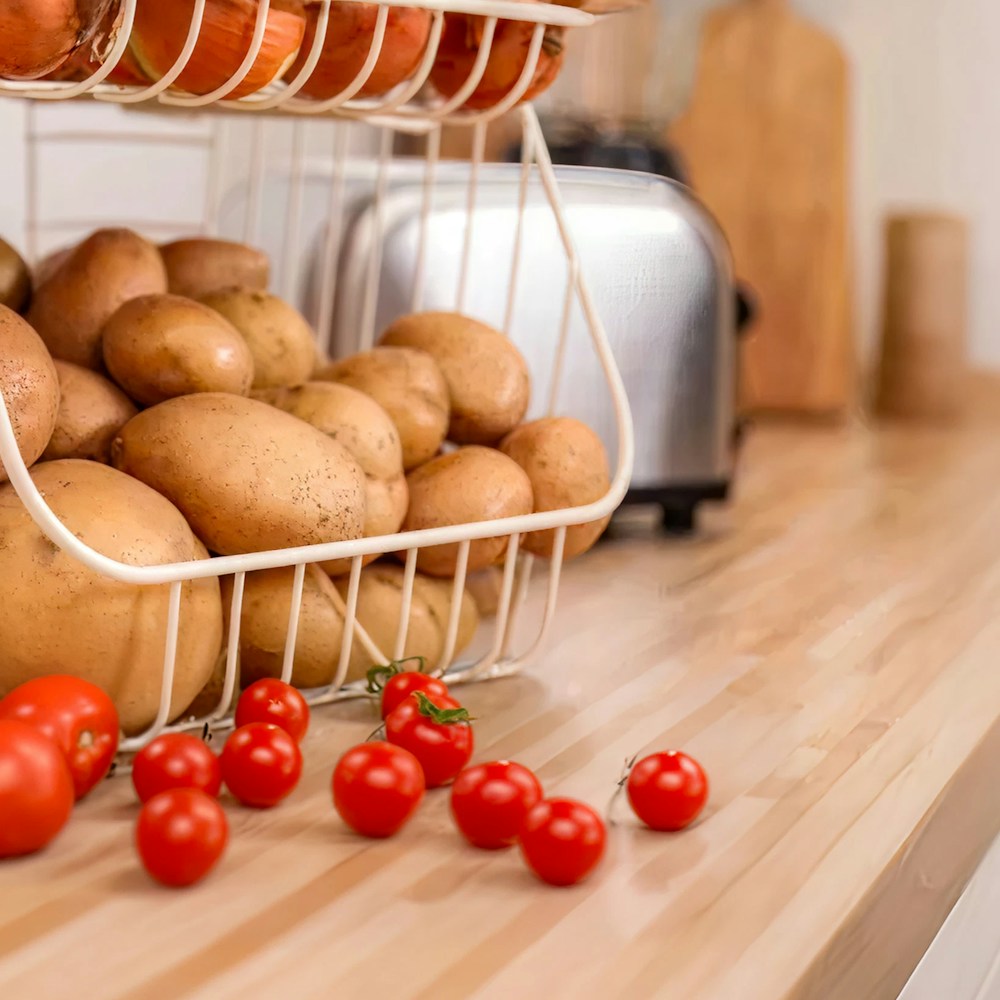
How to store tomatoes, potatoes, and onions: a complete guide to freshness
→
Tomatoes, potatoes, and onions are staple ingredients in every Italian kitchen, but storing them correctly can be a challenge. Often these foods deteriorate quickly, causing waste and economic losses. If you've ever wondered how to store tomatoes, potatoes, and onions to keep them fresh longer, you're in the right place.
In this comprehensive guide, we'll explain everything you need to know to extend their shelf life and reduce food waste.
- Why proper storage of tomatoes, potatoes, and onions is important
- How to properly store tomatoes
- How to store potatoes
- How to store onions
- How Shelfy can help preserve fruits and vegetables better in the refrigerator
- General tips for proper refrigerator storage
Why proper storage of tomatoes, potatoes, and onions is important
Storing tomatoes, potatoes, and onions incorrectly causes them to deteriorate quickly: they soften, sprout, rot, or develop mold.
This not only means food waste, but also money waste, considering the increase in food prices in recent years.
According to recent studies, nearly 30% of produced food is wasted, largely due to poor home storage practices. Learning how to properly store these foods is therefore essential for saving money and reducing environmental impact.
How to properly store tomatoes
Tomatoes are very delicate and their storage depends on their degree of ripeness:
- Unripe tomatoes: best stored at room temperature, away from direct light, in a cool and ventilated place to encourage natural ripening.
- Ripe tomatoes: once ripe, they can be placed in the refrigerator to slow down the deterioration process. However, it's important not to expose them to temperatures that are too low to prevent them from losing flavor and texture.
Practical tips:
- Store tomatoes with the stem end facing down to slow moisture loss.
- Avoid putting them in closed plastic bags, which promote mold formation.
- Shelfy can extend the freshness of tomatoes in the refrigerator by eliminating bacteria and odors that accelerate deterioration.
How to store potatoes
Potatoes require completely different conditions:
- They should be stored in a cool place (between 39-50°F / 4-10°C), dark and well-ventilated.
- Light makes potatoes turn green and generates solanine, a toxic substance.
- Avoid the refrigerator for raw potatoes because cold temperatures convert starch into sugars, altering their taste and texture.
- For peeled or cut potatoes, it's better to store them in the refrigerator immersed in water to slow oxidation, but consume them within a few days.
How to store onions
Onions should be stored in a cool, dry, and well-ventilated place, ideally in a mesh bag or open basket to prevent moisture accumulation that promotes mold and sprouting.
- Cut onions should be wrapped in plastic wrap and consumed within a few days.
- Avoid storing onions together with potatoes, as they release moisture and gases that accelerate mutual deterioration.
- In the refrigerator, onions are better preserved if they're dry and well-protected from odors and moisture. Here's where Shelfy comes in, which thanks to its air purification technology reduces bacteria and odors, keeping even onions stored in the fridge fresher.
How Shelfy can help preserve fruits and vegetables better in the refrigerator
Shelfy is an air purifier designed specifically for refrigerators, which extends the life of fruits and vegetables by up to 12 additional days, thanks to its photocatalytic technology.
- Eliminates 99% of bacteria in 10 minute, preventing mold and slowing down the deterioration process.
- Reduces odors by up to 80%, preventing the mixing of food aromas and flavors.
- The filter is washable and durable, and Shelfy is designed with food-safe and sustainable materials.
- Can be managed via app for smart control of your refrigerator.
Shelfy is perfect for those who want more effective and sustainable storage, saving on groceries and reducing food waste.

General tips for proper Refrigerator Storage
- Regularly clean the refrigerator, removing residues and odors that promote bacterial proliferation.
- Organize foods by category and level of perishability, maintaining good air circulation.
- Keep the refrigerator between 34-39°F (1-4°C), the optimal temperature for preserving most fresh foods.
- Use Shelfy to maintain a hygienic environment, free from unpleasant odors and bacteria, optimizing the storage of all foods.
Storing tomatoes, potatoes, and onions correctly is fundamental for maintaining freshness, taste, and nutritional value, avoiding waste and saving on groceries.
By following our advice and using Shelfy by Vitesy, you'll be able to extend the life of your foods, maintain a cleaner and more fragrant refrigerator, and contribute to more sustainable consumption.
Read more about how Shelfy can revolutionize storage in your refrigerator.
